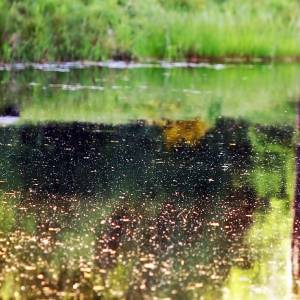Phytoplankton-zooplankton coupling in a cascade of hypertrophic fishponds

All claims expressed in this article are solely those of the authors and do not necessarily represent those of their affiliated organizations, or those of the publisher, the editors and the reviewers. Any product that may be evaluated in this article or claim that may be made by its manufacturer is not guaranteed or endorsed by the publisher.
Accepted: 21 August 2023
Authors
In Central Europe, a significant proportion of shallow lake ecosystems are represented by artificial fishponds, where phytoplankton and zooplankton are an essential part of the food web. Owing to their high fish stocks and intensive fishery management, most fishponds are now eutrophic or hypertrophic, which has had clear impacts on plankton assemblages. To obtain a better understanding of phytoplankton-zooplankton coupling in fishponds, this study examines their ecological relationships in a cascade of three small fishponds over two subsequent years. In all, 133 phytoplankton taxa were recorded, mostly chlorophytes, diatoms and euglenophytes, and 60 zooplankton taxa. Multivariate analysis revealed dissolved oxygen content, dissolved inorganic nitrogen and biochemical oxygen demand as the main factors influencing phytoplankton biomass, while the most significant environment variables affecting zooplankton composition were dissolved oxygen, phosphate concentrations and conductivity. Co-correspondence analysis revealed a significant relationship between phytoplankton and zooplankton density, with cross-correlations from 76% to 87% within the first four axes. Such a high cross-correlation denotes a strong relationship between phytoplankton and zooplankton, even within the hypertrophic conditions determining fishpond ecosystems.
Ethics Approval
Diego Fontaneto, National Research Council, Water Research Institute (CNR-IRSA), Verbania Pallanza, ItalySupporting Agencies
National Agency for Agricultural ResearchHow to Cite

This work is licensed under a Creative Commons Attribution-NonCommercial 4.0 International License.






